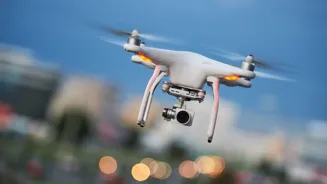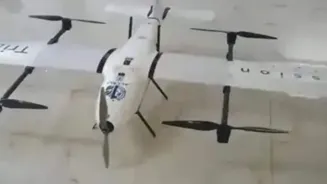Delayed start due to weather
Reports said the experiment was originally planned for July 31 but was postponed due to heavy rain warnings. A team of scientists has been in Jaipur for several days, testing the drone-based system. A special event has been organised at Ramgarh Dam for the launch, and people have been invited to witness the event.
All approvals received in July
Government departments
60 test flights planned
The experiment is a joint project between the Agriculture Department and GenX AI, a tech company based in the US and Bengaluru. Under this pilot project, 60 drone cloud seeding test flights will take place over Ramgarh Dam, reports said.
Small-scale trial with big potential
This drone trial is focused on a small, specific area. If successful, this new method could be used across Rajasthan, especially in areas where clouds form but rain does not fall. It could help save crops during dry spells.
How cloud seeding works
Cloud seeding is a method used to trigger rain. It involves spraying chemicals like silver iodide, sodium chloride, or dry ice into clouds using aircraft, helicopters, or drones. These particles attract moisture, forming larger water droplets
Moisture in clouds is essential
Cloud seeding only works if there is already moisture in the clouds. Without it, even spraying chemicals won't produce rain. For example, two years ago, ₹10 crore was spent on a cloud seeding project at Bhaisunda Dam in Chittorgarh. Despite spraying from planes, it didn't rain due to lack of cloud moisture.
















